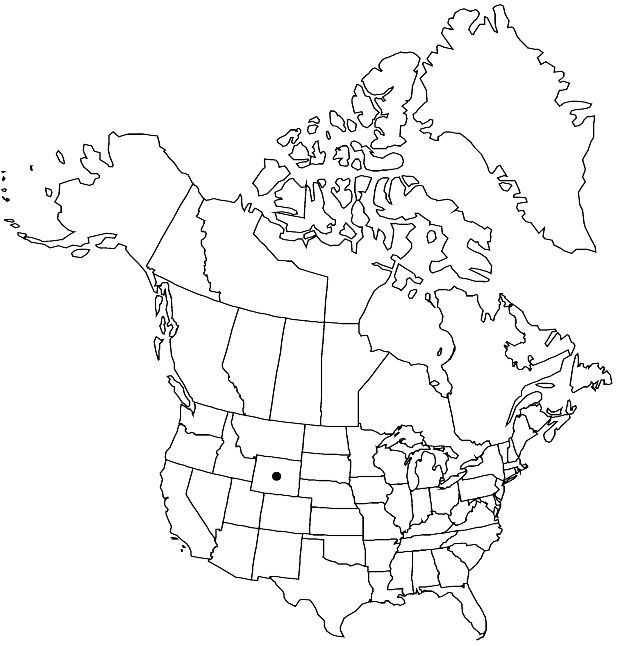Physaria eburniflora
Brittonia 33: 333. 1981.
Perennials; caudex usually simple; densely pubescent, trichomes (sessile), rays often furcate, fused toward base, (nearly smooth). Stems simple from base, prostrate, (arising lateral to rosette), 0.1–0.5 dm. Basal leaves: blade suborbicular, (1–) 2.5 (–3) cm, (base abruptly narrowed to petiole), margins entire, (flat), (surfaces densely silvery-pubescent, trichomes in multiple layers, appressed). Cauline leaves (2–4); blade oblanceolate, ca. 1 cm, (base cuneate), margins entire, (apex acute). Racemes condensed. Fruiting pedicels (divaricate-ascending, nearly straight), 6–10 mm. Flowers: sepals (erect, purplish to greenish), linear-oblong or boatshaped, 5.5–6.5 mm, (lateral pair more saccate than median); petals (white), spatulate, 9–12 mm, (claw undifferentiated from blade). Fruits strongly didymous, irregular in shape and size, (base slightly cordate, apex with a deep closed sinus), strongly to somewhat inflated, 6–8 × 6–8 mm (± bladderlike, papery); valves (retaining seeds after dehiscence), pubescent; replum elliptic to obovate, not constricted, as wide as or wider than fruit, apex obtuse; ovules 4–8 per ovary; style 4–5 mm, (sparsely pubescent or glabrous). Seeds plump.
Phenology: Flowering May–Jun.
Habitat: Limestone hills, red soil, rocky calcareous slopes, clay depressions, granite and marble detritus
Elevation: 1800-3000 m
Discussion
Selected References
None.
Lower Taxa
No values specified."not" is not a number. "elongated" is not a number."thick" is not a number."dm" is not declared as a valid unit of measurement for this property.
